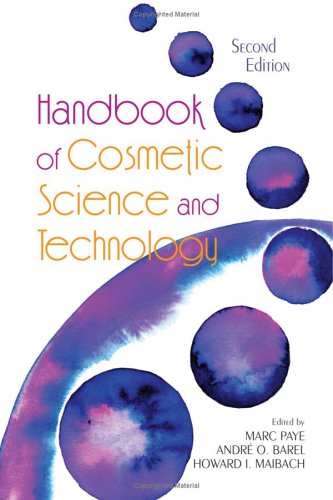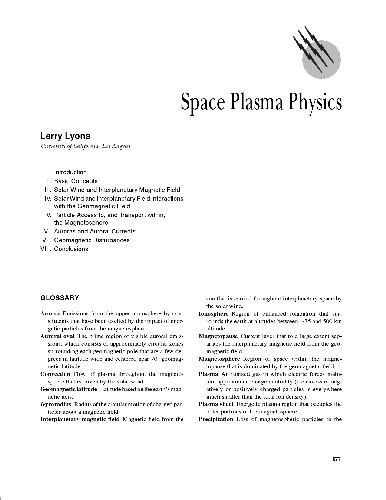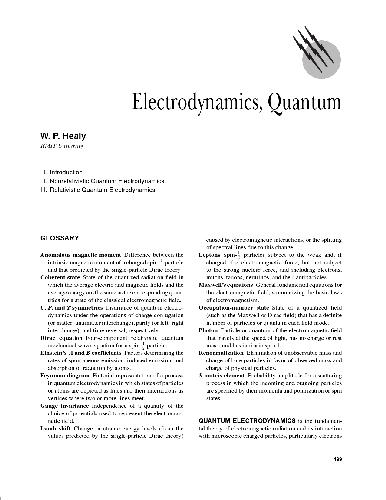Marc Paye, Howard I. Maibach, Andre O. Barel9781574448245, 1574448242
Table of contents :
Front cover……Page 1
Preface……Page 6
Contents……Page 8
Contributors……Page 26
Introduction……Page 31
The Microscopic Structure of the Epidermis and Its Derivatives……Page 35
ACKNOWLEDGMENTS……Page 42
REFERENCES……Page 43
INTRODUCTION……Page 45
TRANSEPIDERMAL WATER LOSS……Page 47
WATER CONTENT……Page 52
CORNEOCYTE VARIABILITY……Page 56
BLOOD VESSEL REACTIVITY……Page 57
ELASTIC RECOVERY/EXTENSIBILITY……Page 61
LIPID CONTENT……Page 64
SURFACE MICROFLORA……Page 68
EPIDERMAL INNERVATION……Page 69
CONCLUSION……Page 70
ACKNOWLEDGMENTS……Page 71
REFERENCES……Page 72
WRINKLES AS AN ASPECT OF AGED SKIN……Page 75
LOCAL DIFFERENCES IN THE WRINKLE COMPARED TO SURROUNDING SKIN……Page 76
COMPUTER MODEL OF THE PERIORBITAL WRINKLE……Page 78
ORIGIN OF THE ALIGNED COLLAGEN LAYER……Page 80
REFERENCES……Page 81
INTRODUCTION……Page 83
FILAGGRIN GENOTYPE AS THE MAJOR DETERMINANT OF SUSCEPTIBILITY TO DRY SKIN……Page 84
THE LIFE CYCLE OF FILAGGRIN……Page 85
FILAGGRIN AND THE NATURAL MOISTURIZING FACTOR……Page 86
PERSPECTIVE ON PROFILAGGRIN AND FILAGGRIN FUNCTIONS……Page 87
Profilaggrin Is Not Always Converted into Filaggrin……Page 88
REFERENCES……Page 89
INTRODUCTION: WHAT IS HAIR?……Page 91
The Structure of the Hair Fiber……Page 94
Mechanical Properties of Hair……Page 95
Electrical Properties of Hair……Page 96
Embryology of the Hair Follicle……Page 97
Histology of the Hair Follicle……Page 98
Cyclical Activity of the Hair Follicle……Page 99
CLINICAL HAIR GROWTH EVALUATION METHODS……Page 100
Invasive Methods……Page 102
Semi-Invasive Methods……Page 103
Noninvasive Methods……Page 104
BASICS ABOUT PSYCHOSOCIAL ASPECTS OF HAIR……Page 113
REFERENCES……Page 114
ANATOMY……Page 119
HISTOLOGY The Nail Plate……Page 120
Other Nail Structures……Page 122
PHYSIOLOGY……Page 125
REFERENCES……Page 126
FUNCTION OF VEHICLES Direct Intrinsic Effect……Page 129
Delivery of Actives……Page 130
Appearance……Page 131
Physical Chemical……Page 133
DESCRIPTION AND DEFINITION OF MAIN VEHICLES Solutions……Page 134
Emulsions: Lotions and Creams……Page 136
Hydrolipid Dispersions……Page 140
Nanoemulsions and Nanoparticles……Page 141
FUNCTIONAL DESIGN, COMPOSITION, AND RESULTING EFFECT……Page 142
Selection of Vehicle Type……Page 143
Rheology……Page 146
Preservation……Page 147
Development Strategy and Rationale……Page 148
CHARACTERIZATION Physical Characterization……Page 150
Biological Characterization……Page 151
REFERENCES……Page 152
DESIGN ASPECTS OF A VECTOR Microparticles……Page 155
Nanoparticles……Page 157
Microemulsions……Page 158
Nanoemulsions (Submicron Emulsions)……Page 159
Nanoparticles……Page 161
Vesicles……Page 162
DERMATOLOGICAL AND COSMETIC USES OF ENCAPSULATION Microparticles……Page 163
Nanoparticles……Page 164
Multiple Emulsions……Page 165
Microemulsions……Page 166
Nanoemulsions……Page 167
Vesicles……Page 168
THE FUTURE OF ENCAPSULATION……Page 169
REFERENCES……Page 170
INTRODUCTION……Page 175
POROUS MICROSPHERES Preparation……Page 176
Loading of Active Agents……Page 177
APPLICATIONS……Page 178
Benzoyl Peroxide……Page 179
Retinoic Acid……Page 182
REFERENCES……Page 183
PHOSPHATIDYLCHOLINE……Page 185
LIPOSOMES……Page 187
APPLICATIONS……Page 190
REFERENCES……Page 192
INTRODUCTION……Page 195
COLLOIDAL ORGANIZATION……Page 196
NEW SPONTANEOUS, THERMODYNAMICALLY STABLE (STS) LIPOSOMES……Page 197
UTILITY……Page 200
ENCAPSULATION EFFICIENCY……Page 201
COSMETIC APPLICATIONS……Page 202
REFERENCES……Page 203
INTRODUCTION……Page 205
ELASTIC VESICLES–SKIN INTERACTION……Page 206
TRANSFERSOMES……Page 207
EFFECT OF TYPE SURFACTANTS AND CONCENTRATION……Page 208
NON-PHOSPHOLIPID-BASED ELASTIC VESICLES……Page 210
ETHOSOMES……Page 211
ACTION MECHANISM OF ELASTIC VESICLES ON PENETRATION……Page 213
REFERENCES……Page 215
IONTOPHORESIS……Page 219
MECHANISMS OF IONTOPHORETIC TRANSPORT Theoretical Mechanisms of Iontophoretic Transport……Page 220
PARAMETERS AFFECTING IONTOPHORETIC DELIVERY……Page 221
Bioengineering Investigations of the Effect of Iontophoresis on the Skin……Page 222
Tolerance and Safety Issues Associated with Iontophoresis……Page 223
Clinical Applications of Topical Iontophoretic Transport……Page 224
CONCLUSIONS……Page 225
REFERENCES……Page 226
DELIVERING ACTIVES TO THE SKIN……Page 231
IONTOPHORESIS……Page 232
Size, Charge, and Nature of the Electrodes……Page 233
Type of Formulation……Page 234
Treatment of Scars……Page 235
IONTOPHORESIS DEVICES……Page 237
REFERENCES……Page 238
HISTORY AND EVOLUTION……Page 241
APPLICATIONS OF COSMETIC PATCHES……Page 242
DEVELOPMENT OF COSMETIC PATCHES……Page 243
TYPES AND CONFIGURATION……Page 244
Backing Film……Page 246
Adhesive Layer……Page 247
Production……Page 248
REGULATORY ISSUES……Page 249
FUTURE TRENDS……Page 250
INTRODUCTION……Page 253
Product Authorization……Page 254
ANTIBACTERIAL PRODUCTS Topical Antimicrobial Products……Page 255
The Minimal Inhibitory Concentration Test……Page 256
The Time-Kill Test……Page 257
PRESERVATION AND PRESERVATIVE SYSTEMS Concept of Active Preservation and Self-Preserving Formula……Page 258
Most Commonly Used Preservatives……Page 259
REFERENCES……Page 260
Colorants……Page 263
REFERENCES……Page 275
INTRODUCTION……Page 277
EMOLLIENTS AND REFATTENERS Introduction……Page 278
Lipophilic Emollients and Occlusives……Page 279
Hydrophilic Lipids……Page 281
Lanolin……Page 282
Silicone Derivatives……Page 283
HUMECTANTS……Page 284
POLYMERS……Page 285
Natural Polymers and Their Chemically Modified Derivatives……Page 286
SURFACTANTS……Page 290
CONCLUSIONS……Page 292
REFERENCES……Page 293
INTRODUCTION……Page 295
BUTYLENE GLYCOL Description……Page 296
Safety……Page 297
General Use……Page 298
HYALURONIC ACID Description……Page 299
LACTIC ACID Description……Page 300
PANTHENOL Description……Page 301
PCA AND SALTS OF PCA Description……Page 302
Safety……Page 303
SORBITOL Description……Page 304
Effects on Skin……Page 305
REFERENCES……Page 306
HISTORICAL PERSPECTIVES……Page 311
CERAMIDES FROM EPIDERMIS……Page 312
LIPIDS FROM OTHER KERATINIZED TISSUES……Page 315
FUTURE DIRECTIONS……Page 316
REFERENCES……Page 317
SILOXANE BACKBONE……Page 319
KEY INGREDIENTS IN THE COSMETICS AND TOILETRIES INDUSTRY……Page 320
Permeability/Controlled Moisturization/Protection Against Dehydration……Page 322
Protection……Page 323
Formulating Flexibility……Page 324
HAIR CARE PRODUCTS Hair Conditioning/Improved Combing……Page 325
Natural-Look Fixatives……Page 326
REFERENCES……Page 327
DEFINITIONS……Page 329
REGULATORY United States……Page 330
Other Countries……Page 331
UVB……Page 334
UVA……Page 337
ADVERSE REACTIONS—TOXICITY……Page 338
CONCLUSION……Page 339
REFERENCES……Page 340
IN VITRO STUDIES……Page 343
ANIMAL STUDIES……Page 344
EFFECT ON HUMAN SKIN……Page 346
REFERENCES……Page 348
Melasma……Page 349
OTHER PIGMENTATION DISORDERS Solar Lentigos……Page 350
Treatment……Page 351
Results……Page 352
SUMMARY……Page 353
REFERENCES……Page 354
Alpha Hydroxy Acids……Page 357
REFERENCES……Page 361
Anionic Surfactants……Page 363
Micelle Formation and Surfactant Solubility……Page 365
Phase Behavior of Nonionic Surfactants……Page 366
FOAMING PROPERTIES OF SURFACTANTS……Page 367
Dynamic Surface Tension……Page 368
Foamability and Foam Stability……Page 369
Adsorption of Surfactants on Water Soluble Protein……Page 370
Binding of Surfactant to Human Hair……Page 371
REFERENCES……Page 373
IONIC SURFACTANTS Anionic Surfactants……Page 377
Cationic Surfactants……Page 384
Amphoteric Surfactants……Page 388
Ethers……Page 389
Ester……Page 392
NONHYDROCARBON SPECIALTY SURFACTANTS Alkoxylated Polysiloxanes……Page 395
FURTHER READING……Page 396
Anti-Irritants for Surfactant-Based Products……Page 399
ANTI-IRRITATION BY AN APPROPRIATE COMBINATION OF SURFACTANTS……Page 400
ANTI-IRRITATION BY REFATTENING AGENTS……Page 401
ANTISENSORY IRRITATION……Page 402
Anti-Irritants for Stinging, Burning, and Itching Sensations……Page 403
MAGNESIUM IS NOT AN ANTI-IRRITANT FOR SURFACTANTS……Page 404
REFERENCES……Page 405
SEAWATER……Page 407
Potassium……Page 408
Strontium and Selenium……Page 412
REFERENCES……Page 413
INTRODUCTION……Page 415
VITAMIN E……Page 416
VITAMIN C……Page 417
THIOL ANTIOXIDANTS……Page 418
POLYPHENOLS……Page 419
THE ANTIOXIDANT NETWORK……Page 420
ACKNOWLEDGMENT……Page 422
REFERENCES……Page 423
MODES OF ADMINISTRATION……Page 429
INDICATIONS AND CLINICAL APPLICATIONS……Page 430
Full Thickness Wounds……Page 431
Dry and Irritated Skin……Page 432
CONCLUSION……Page 433
REFERENCES……Page 434
CONDITIONING AND THE HAIR FIBER SURFACE Hair Damage……Page 437
Hair Damage and the Cuticle Surface……Page 439
COMMERCIAL CONDITIONERS……Page 441
Cationic Surfactants……Page 442
Compatibility with Anionics……Page 443
Cationic Polymers……Page 445
Silicones……Page 446
Auxiliary Ingredients……Page 450
REFERENCES……Page 451
Different Types of Emulsions……Page 457
FORMULATING HYDRATING CREAMS AND LOTIONS……Page 459
OIL-IN-WATER EMULSIONS……Page 460
W/O Emulsions……Page 461
Water-In-Silicone Emulsions……Page 462
Preservative Systems……Page 463
SKIN CARE EMULSIONS FOR THE AGING POPULATION……Page 465
Interference Pigments……Page 466
Soft Focus Effects……Page 467
Polymers……Page 468
REFERENCES……Page 469
BACKGROUND Definition of Wrinkles……Page 471
SUBSTANTIATION OF ANTIWRINKLE CLAIMS Clinical Methodologies……Page 472
Cosmetics……Page 473
Vitamins……Page 474
SUMMARY AND CONCLUSIONS……Page 475
REFERENCES……Page 476
HISTORY……Page 479
FORMULATION……Page 480
APPLICATION……Page 481
SUNSCREEN ACTIVITY……Page 482
ALTERNATIVE TANNING AGENTS……Page 483
REFERENCES……Page 484
HYDROQUINONE (1,4-DIHYDROXYBENZENE)……Page 487
ASCORBIC ACID (VITAMIN C) AND ITS DERIVATIVES……Page 490
REFERENCES……Page 491
CLINICAL, VISUAL, AND TACTILE SYMPTOMS OF CELLULITE……Page 495
ETIOLOGY OF CELLULITE……Page 496
DESCRIPTION OF THE DIFFERENT STAGES OF LIPODYSTROPHY OF FAT TISSUES……Page 497
OBJECTIVE EVALUATION OF THE SYMPTOMS OF LIPODYSTROPHY OF THE SKIN……Page 498
Validation of Skin Surface Thermography Using Infrared Thermal Imaging System in the Evaluation of Cellulite (12,22,23)……Page 499
Measurement of Skin Surface Topography……Page 500
TREATMENTS OF CELLULITE……Page 501
CRITICAL REVIEW OF RECENT CLINICAL ANTICELLULITE STUDIES……Page 503
CONCLUSIONS……Page 505
REFERENCES……Page 506
WHAT IS SOAP?……Page 509
SOAP RAW MATERIALS Fats and Oils……Page 510
SOAP PHASES……Page 511
ADDITIVES……Page 512
Colorants and Pigments……Page 513
Antimicrobial Agents……Page 514
Drying and Finishing……Page 515
FORMULATIONS: REGULAR AND TRANSLUCENT SOAPS, COMBARS, SYNDETS, AND SPECIALTY SOAPS……Page 517
BAR SOAP PERFORMANCE EVALUATIONS……Page 519
Cracking……Page 520
Clinical Evaluations……Page 521
REFERENCES……Page 522
INTRODUCTION……Page 523
SURFACTANT-TYPE SKIN CLEANSERS……Page 525
SOLVENT-TYPE SKIN CLEANSERS……Page 529
CONCLUSION……Page 531
REFERENCES……Page 532
THE STRUCTURE AND PROPERTIES OF HAIR……Page 535
Hair Soiling and Soil Removal……Page 537
Anionic Surfactants……Page 538
Amphoteric Surfactants……Page 539
Specialty Shampoos……Page 540
Evaluation and Safety……Page 541
HAIR CONDITIONERS……Page 542
Styling Products……Page 543
Styling Aids……Page 544
Permanent Waving……Page 546
Hair Straightening……Page 551
Hair Coloring……Page 552
CONCLUDING REMARKS……Page 556
REFERENCES……Page 557
The Tissues of a Tooth……Page 559
The Periodontium……Page 560
Other Parts of the Mouth……Page 562
DENTAL DISEASES WORLDWIDE……Page 563
Factors Affecting Delivery of Actives in Mouth……Page 564
Stain Removal and Whitening Toothpastes……Page 565
Dentifrices to Reduce Offensive Bad Breath……Page 567
Therapeutic Dentifrices……Page 569
Technologies to Reduce Tooth Sensitivity……Page 574
Multibenefit Technologies in Dentifrices……Page 575
STRATEGY FOR CLINICAL STUDIES IN ORAL CARE PRODUCTS……Page 581
REFERENCES……Page 582
COLOR Color Additive Regulation……Page 585
Color Additives—Definitions……Page 586
COLOR CHEMISTRY AND MANUFACTURE……Page 588
Categories of Organic Colorants……Page 589
Natural Dyes……Page 590
Inorganic Colors……Page 591
Inorganic Pigments……Page 592
Quality Control of Colorants……Page 593
Pearlescent Pigments and Other Specialty Pigments……Page 594
Treated Pigments……Page 595
Light Diffusing Pigments……Page 596
Face Powders……Page 597
Mica……Page 598
Loose Face Powders……Page 599
Powder Blushers……Page 600
Foundation……Page 601
Eye Make-Up……Page 604
Eyeliners……Page 607
Pencils……Page 608
Lipstick……Page 609
Nail Color……Page 611
MAKE-UP FORMULARY Face Products……Page 612
REFERENCES……Page 621
EVAPORATION COATINGS……Page 623
Light-Curing Gels……Page 624
Nail Whitener……Page 625
REFERENCES……Page 626
Apocrine Glands……Page 627
Active Ingredients for Controlling Underarm Wetness—State of the Art……Page 628
New Concepts for Controlling Underarm Wetness……Page 629
Formulation Work……Page 630
Deodorant/Antiperspirant Sticks……Page 631
Antiperspirant Roll-Ons……Page 634
Environmental Issues……Page 636
REFERENCES……Page 637
BIOLOGY OF THE UNDERARM MICROFLORA……Page 641
Odor-Masking Deodorants……Page 642
Esterase Inhibitors……Page 643
Antimicrobial Active-Containing Deodorants……Page 644
New Concepts for Controlling Underarm Odor……Page 645
Deodorant Sticks……Page 646
Deodorant Aerosols……Page 647
Deodorant Pump Sprays……Page 648
REFERENCES……Page 649
Physiological Differences in Female and Male Skin……Page 653
SHAVING General Introduction to Shaving……Page 654
Preshaving Preparations……Page 655
Wet Shaving Preparations……Page 656
AFTERSHAVE PRODUCTS Aftershave Lotions……Page 662
Aftershave Balms……Page 664
FACE CARE FOR MEN……Page 665
Light Moisturizers……Page 666
Special Face Care Creams……Page 667
Special Products……Page 668
REFERENCES……Page 669
THE DEVELOPMENT OF BABY SKIN……Page 671
Protection Against Percutaneous Absorption of Harmful Substances……Page 672
FREQUENT SKIN PROBLEMS IN NEWBORNS Diaper Dermatitis……Page 673
THE CARE OF BABY SKIN……Page 674
Care……Page 675
QUALITY MANAGEMENT IN BABY CARE……Page 676
REFERENCES……Page 677
Physiological Changes……Page 679
THE COSMETIC CARE OF ELDERLY SKIN……Page 680
Face Care……Page 681
REFERENCES……Page 682
PRACTICAL DEFINITION OF STABILITY TESTING……Page 685
Determining That the Product Will Perform as Intended and Remains Safe to Use……Page 686
Why Is Testing Being Done?……Page 687
Where Will Test Samples be Stored and How Many Are Necessary?……Page 688
How Samples Are Evaluated and What to Look for—Identification of Instability……Page 689
FORMULA-RELATED REASONS FOR STABILITY TESTING Specific Considerations Related to the Development of Particular Formula Types……Page 690
Raw Material Substitution……Page 694
Packaging Issues……Page 695
REFERENCES……Page 696
Sources of Contamination……Page 697
Use of Validated Methods to Control Products and Water……Page 699
CHALLENGE TEST FOR THE EFFICACY OF PRESERVATION Aim of Preservation……Page 701
Test Organisms……Page 702
Test Conditions and Validations……Page 703
DETERMINATION OF WATER AVAILABILITY OR AW……Page 704
CULTURE MEDIA, NEUTRALIZING SOLUTION, AND BUFFERS……Page 705
REFERENCES……Page 708
INTRODUCTION……Page 713
SKIN CORROSION TESTING Assay Systems……Page 714
Validation Status……Page 715
SKIN IRRITATION TESTING Assay Systems……Page 717
DISCUSSION……Page 719
REFERENCES……Page 720
RECONSTRUCTED CORNEAL MODELS Corneal Tissues……Page 725
Reconstructed Cornea Models……Page 726
Skin Equivalents……Page 727
Barrier Function and Penetration……Page 729
Irritation Testing……Page 730
Pharmacotoxicology……Page 731
Studies with Melanocytes……Page 732
REFERENCES……Page 733
INTRODUCTION……Page 737
SKIN EQUIVALENTS USED IN COSMETIC EFFICACY TESTING Basic Research on Reconstructed Human Skin……Page 738
Applications of Skin Equivalents in Cosmetic Efficacy Testing……Page 739
EXAMPLES OF COSMETIC EFFICACY TESTING USING IN VITRO SKIN MODELS……Page 742
Biological Effects of Solar and UVA Irradiation and the Efficiency of Photoprotection……Page 743
Skin Absorption and Metabolism of Vitamin E Prodrugs and Antioxidant Efficiency……Page 745
CONCLUSION……Page 746
REFERENCES……Page 747
INTRODUCTION……Page 751
SQM: PRINCIPLE……Page 752
SQM AND SKIN DRYNESS……Page 753
SQM AND SKIN HYDRATION……Page 754
Single Short-Term Patch Tests……Page 755
Realistic Hand Immersion Tests……Page 756
Combined Home-Use and Laboratory-Controlled Hand Immersion Test (10)……Page 757
SQM and Hand Skin Sensitivity……Page 758
CONCLUSION……Page 759
REFERENCES……Page 760
EPIDEMIOLOGIC STUDIES……Page 763
Quantification of Cutaneous Thermal Sensation……Page 765
Stinging Test……Page 766
Evaluation of Itching Response……Page 767
Bioengineering Tests……Page 768
REFERENCES……Page 771
A CLINICAL EVALUATION: THE REGRESSION METHOD……Page 775
Static Measurements……Page 776
Dynamic Measurements……Page 777
CONCLUSION……Page 780
REFERENCES……Page 781
IN VITRO METHODS……Page 783
IN VIVO METHODS……Page 784
CONCLUSIONS……Page 785
REFERENCES……Page 788
INTRODUCTION……Page 791
Experimental Designs……Page 792
Normal Load……Page 793
SKIN FRICTION COEFFICIENT VALUES……Page 794
Hydration……Page 795
Lubricants/Emollients/Moisturizers……Page 797
Emollients and Moisturizers……Page 798
Probes……Page 799
Anatomic Region, Age, Gender, and Race……Page 800
REFERENCES……Page 802
METHODOLOGIES Histamine-Induced-Itch Human Model……Page 805
Scratch Behavior Measurement……Page 807
REFERENCES……Page 809
METHODS FOR HAIR REMOVAL……Page 811
Removal of Hair Above and Considerably Below the Skin Surface……Page 812
Perceptive Evaluation……Page 813
Instrumental Evaluation……Page 816
COMPUTER SIMULATION OF HAIR REMOVAL EFFICACY……Page 817
REFERENCES……Page 819
INTRODUCTION……Page 823
EPR OF NITROXIDE SPIN PROBE……Page 824
SPIN PROBES (OR SPIN LABELS)……Page 825
CONVENTIONAL ORDER PARAMETER (S)……Page 826
CONVENTIONAL ORDER PARAMETER AND ORDER PARAMETER BY SIMULATION METHOD……Page 827
SUMMARY AND FUTURE PROSPECTS……Page 829
REFERENCES……Page 830
RESULTS Skin Physiology and Chemistry……Page 833
Histology……Page 836
Percutaneous Absorption……Page 837
Treatment of Disease……Page 838
Healing and Repair……Page 839
DISCUSSION……Page 840
REFERENCES……Page 842
COSMETICS IN HISTORY……Page 845
STATUTORY DEFINITION OF COSMETICS……Page 846
COSMETICS THAT ARE ALSO DRUGS: THE INTENDED USE DOCTRINE……Page 847
THE COSMETIC/DRUG DISTINCTION: THE ROLE OF THE INTENDED USE DOCTRINE IN FDA ASSIGNMENT OF REGULATORY CATEGORY (TRADE CORRESPONDENCE)……Page 851
Trade Correspondence……Page 852
1980’s Regulatory Letters……Page 853
OTC Drug Monographs. Cosmetics That Contain Active Ingredients……Page 854
THE ALPHA HYDROXY ACID (AHA) SITUATION……Page 856
COSMECEUTICALS, COSMETIC THERAPEUTICS, AND OTHER PROPOSED DEFINITIONS……Page 857
REFERENCES……Page 858
BASIC U.S. LEGAL STRUCTURE FOR COSMETICS……Page 863
BASIC U.S. REGULATORY STRUCTURE FOR COSMETICS Definitions: Cosmetics, Soaps, and Drugs……Page 865
Statutory Controls on Cosmetics……Page 866
Regulatory Controls on Cosmetics……Page 869
Self-Regulation……Page 877
International Harmonization and Future Regulatory Challenges……Page 879
Bioterrorism……Page 881
Bovine Spongiform Encephalopathy (BSE) and Cosmetics……Page 882
REFERENCES……Page 884
REGULATORY ENVIRONMENT……Page 891
COSMETICS……Page 892
QUASIDRUGS……Page 894
COSMETICS IN THE FUTURE……Page 896
REFERENCES……Page 897
THE LAWS OF THE MEMBER STATES RELATING TO COSMETIC PRODUCTS AND THE 6TH AMENDMENT……Page 899
Annex IV……Page 900
7th Amendment of the European Cosmetic Directive……Page 901
IMPLEMENTATION OF THE EUROPEAN DIRECTIVE ON COSMETIC PRODUCTS IN THE DIFFERENT MEMBER STATES OF THE EUROPEAN UNION……Page 904
Greece……Page 905
Norway (Not a Member State)……Page 906
REFERENCES……Page 907
REGIONAL REQUIREMENTS……Page 909
The European Union……Page 910
Japan……Page 912
TYPE OF SUPPORT……Page 913
In Vivo Tests on Human Volunteers: Clinical Studies……Page 914
Sensory Tests with Human Volunteers……Page 915
CONCLUSION……Page 916
REFERENCES……Page 917
IRRITANT CONTACT DERMATITIS (IRRITATION)……Page 919
Allergen……Page 920
Nonimmunological Contact Urticaria……Page 921
Cosmetic Intolerance Syndrome……Page 922
Contact Urticaria Syndrome……Page 923
REFERENCES……Page 924
MOLECULAR MECHANISMS OF SKIN IRRITANCY……Page 925
FACTORS PREDISPOSING TO CUTANEOUS IRRITATION……Page 926
EPIDEMIOLOGY……Page 927
Acute ICD……Page 928
Cumulative ICD……Page 929
Nonerythematous ICD……Page 930
REFERENCES……Page 931
Need for Models……Page 935
ANIMAL MODELS Draize Rabbit Models……Page 937
Cumulative Irritation Assays……Page 939
HUMAN MODELS……Page 940
Cumulative Irritation Testing……Page 941
Immersion Tests……Page 942
Assessing Protective Barriers……Page 943
REFERENCES……Page 944
INTRODUCTION……Page 947
Instrumental Noninvasive Bioengineering Measurements……Page 948
FACTORS THAT INFLUENCE SKIN RESPONSIVENESS TO IRRITANTS……Page 951
Climatic Factors……Page 952
COSMETIC AND OCCUPATIONAL IRRITANTS Occupational Skin Irritants……Page 953
Cosmetic Skin Irritants……Page 954
STRATEGY OF MAKING ANTI-IRRITANT COSMETICS……Page 955
IN VIVO STUDIES OF THE ANTI-IRRITATION PROPERTIES OF SOME COSMETIC INGREDIENTS……Page 957
REFERENCES……Page 959
INTRODUCTION……Page 963
BLACK VS. CAUCASIAN IRRITATION RESPONSE……Page 964
ASIAN VS. CAUCASIAN IRRITATION RESPONSE……Page 965
CONCLUSION……Page 970
REFERENCES……Page 971
STEPS TO PERCUTANEOUS ABSORPTION……Page 973
METHODS FOR PERCUTANEOUS ABSORPTION……Page 974
VEHICLE INFLUENCE ON PERCUTANEOUS ABSORPTION……Page 977
SKIN CLEANSING AND DECONTAMINATION……Page 978
COSMETIC PERCUTANEOUS ABSORPTION AND TOXICITY……Page 981
COSMECEUTICS……Page 982
REFERENCES……Page 984
Percutaneous Absorption……Page 987
Why Do We Want to Correlate TEWL and Percutaneous Absorption?……Page 988
Using In Vitro Methods to Model In Vivo Experiments……Page 992
Percutaneous Absorption Measurement Methods……Page 993
Type of Compound Used to Measure Percutaneous Absorption……Page 994
CONCLUSION……Page 995
REFERENCES……Page 996
INTRODUCTION……Page 999
The Common Use of Cosmetic Ingredients in Pharmaceuticals……Page 1000
Condition of the Skin……Page 1001
THE NATURE OF COSMETIC ALLERGENS Fragrance Ingredients……Page 1002
Preservatives……Page 1004
‘‘Active’’ or Category-Specific Ingredients……Page 1005
Excipients and Emulsifiers……Page 1006
HYPOALLERGENIC PRODUCTS……Page 1007
REFERENCES……Page 1008
Index……Page 1013
Back cover……Page 1034







Reviews
There are no reviews yet.